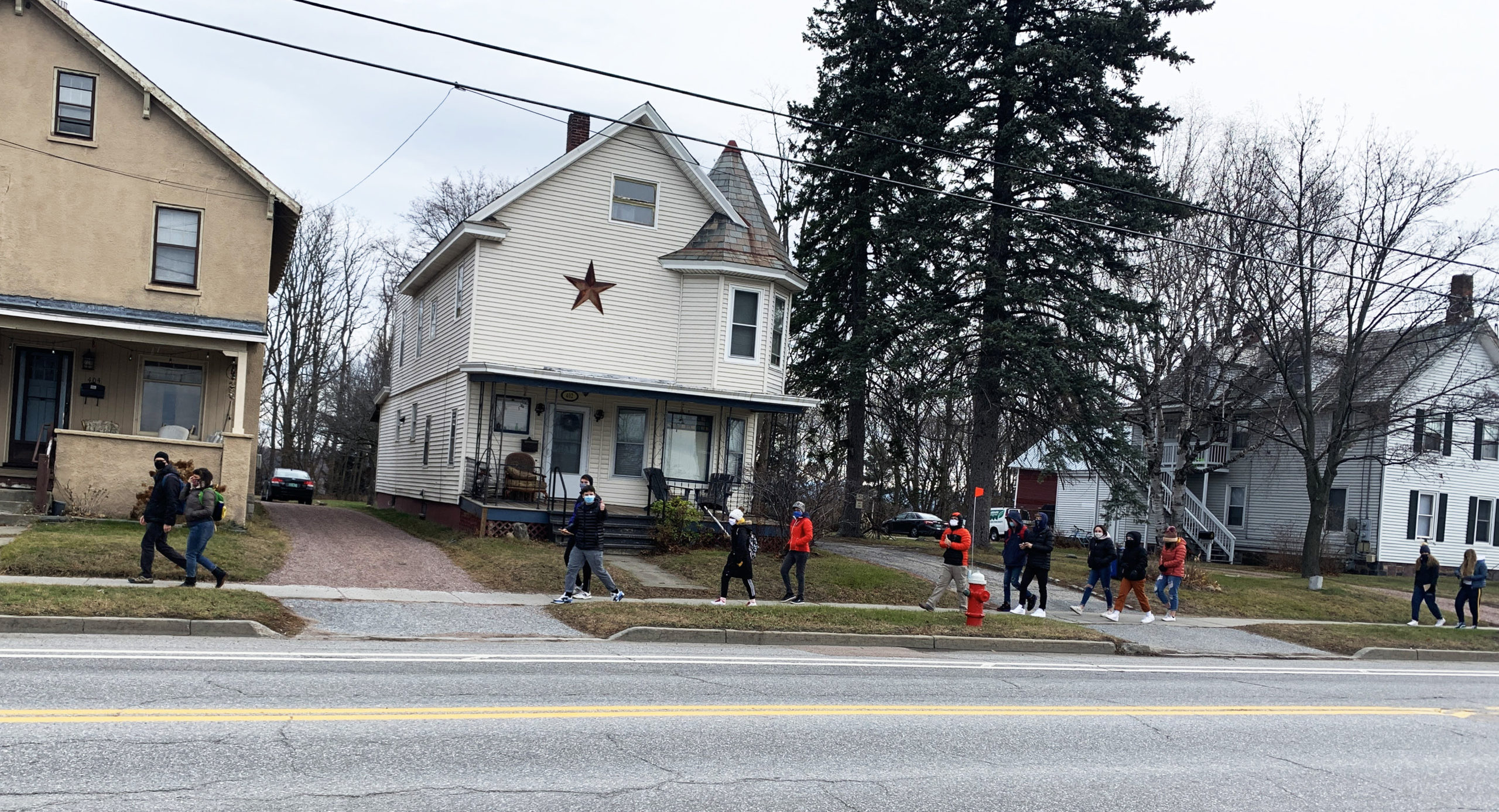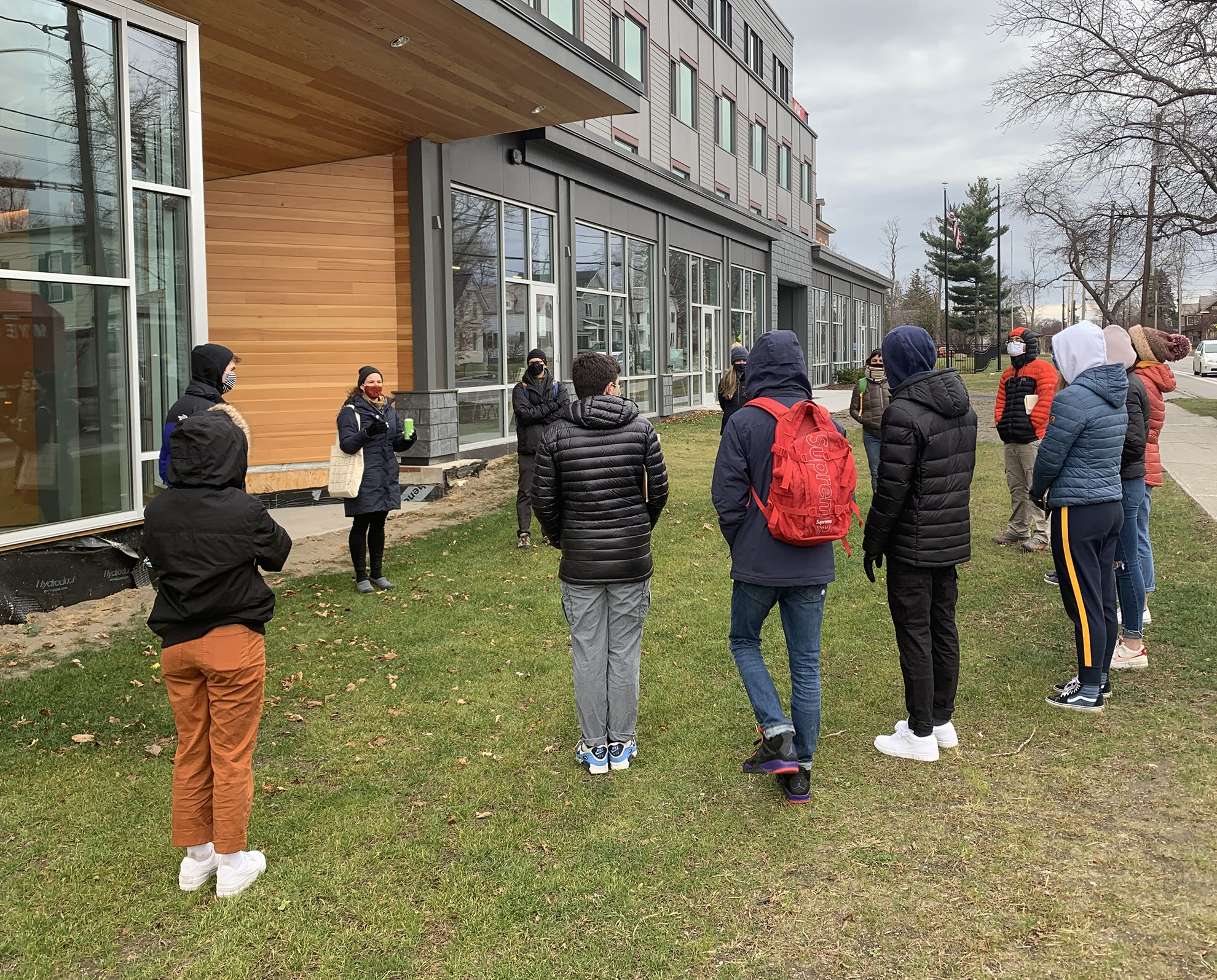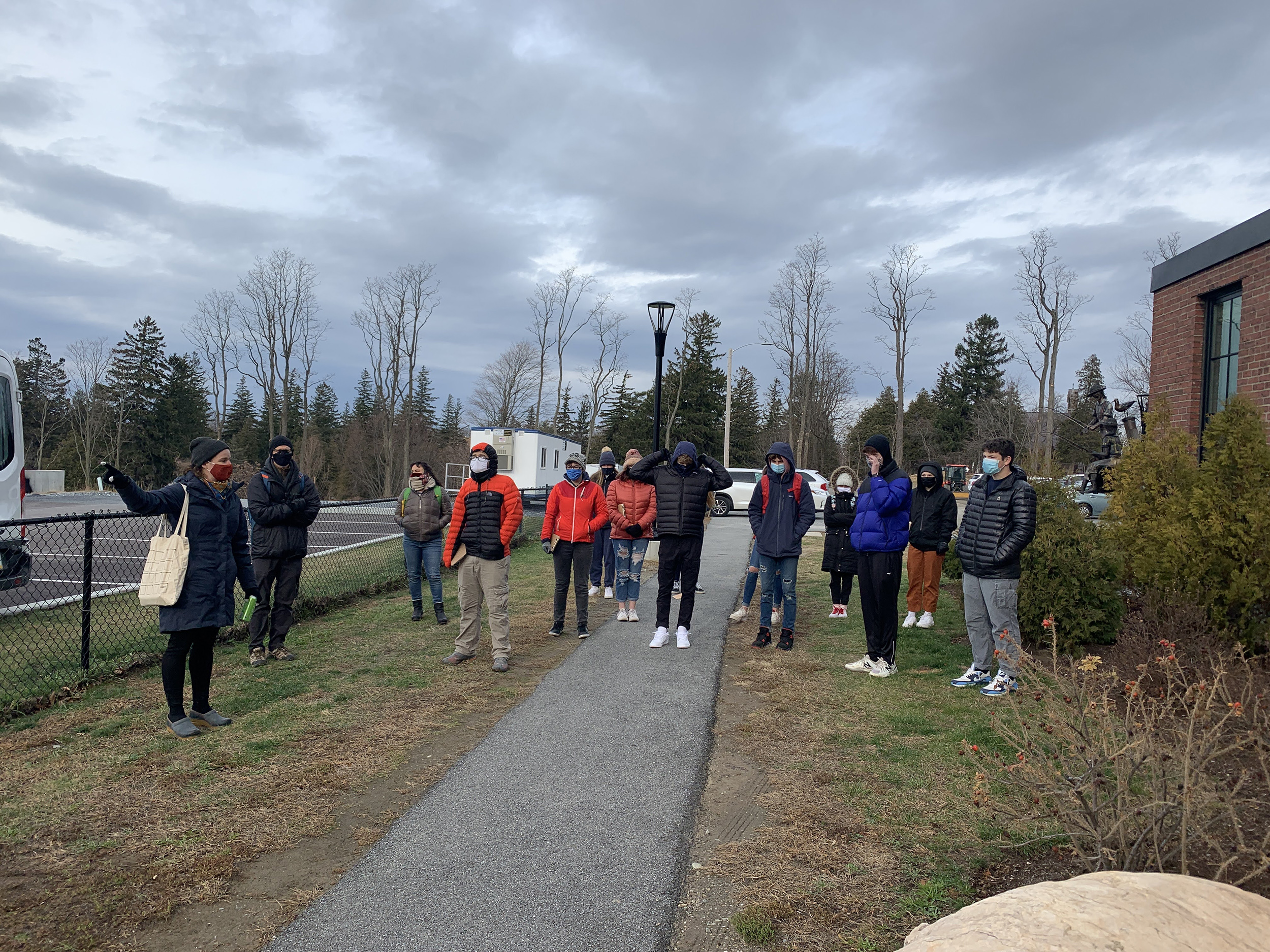On Dec. 4, CVOEO’s Fair Housing Project Outreach and Education Coordinator, Corrine Yonce, took fair housing education out into the community by spending time with Burlington High School’s immersive learning program, Burlington City Lake Project.

The day started by unpacking what fair and affordable housing mean. Corrine introduced the concepts through her own personal experiences, and asked students why they think both fair and affordable housing are important to inclusive communities. They also discussed and defined common housing terms like the Fair Housing Act, inclusionary zoning, protected classes, section 8, and market rate housing.

The students and teachers then took public transportation to check out one of the newest mixed-income housing complexes near where they go to school – Cambrian Rise. They talked about the controversy surrounding that development, and did the math for what 700 new housing units do for a community that has 1-2% housing vacancy rate.
One student asked “Why would they make 25% of the housing affordable by the lake when they could make more money developing all the housing as market rate?” which led to a discussion about equity in resources – especially for those in protected classes – and the important value of mixed-income communities.
“I grew up in a house nowhere near the lake, and I turned out fine. Why should having a view of the lake be important to low-income people?”
Another student was still not sold. “I grew up in a house nowhere near the lake, and I turned out fine. Why should having a view of the lake be important to low-income people?” Other students joined the conversation to point out the proximity of Cambrian Rise to other resources, like the bus line which they took to visit the community and the multi-use path that follows the coast of Lake Champlain.
Corrine shared an anecdote about working with the Champlain Housing Trust community, Laurentide, one of the earliest Cambrian Rise buildings to be fully occupied. Many residents there arrived to an art workshop Corrine had lead with images of the sunset on the lake. A few residents explained how past places they lived were overcrowded, on busy streets, and only close to strip malls. The lake added to their sense of place, belonging, and provided a peaceful outlet for busy lives.
This anecdote helped students understand that not all the impacts of fair, affordable, inclusive housing are quantifiable. Some of the impacts can only be learned through listening to the experiences of the people most impacted by affordable housing.
